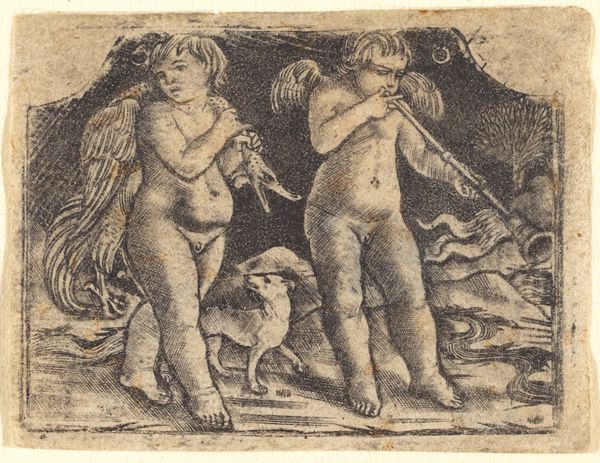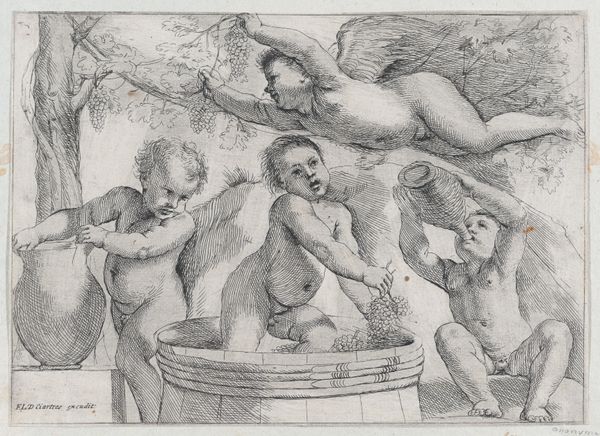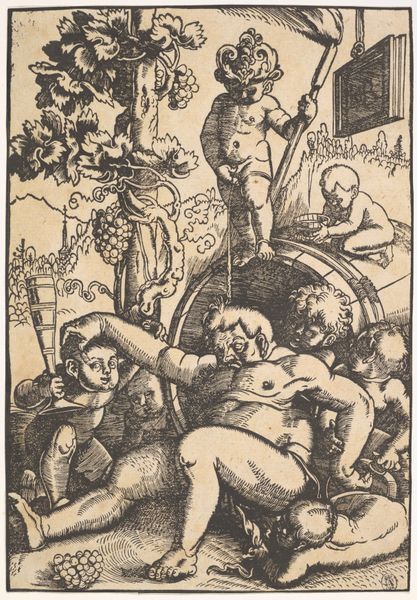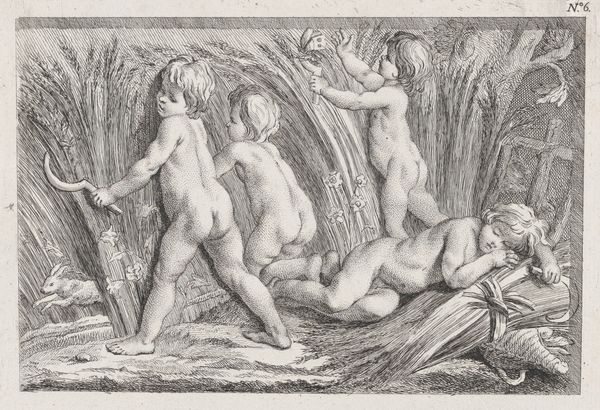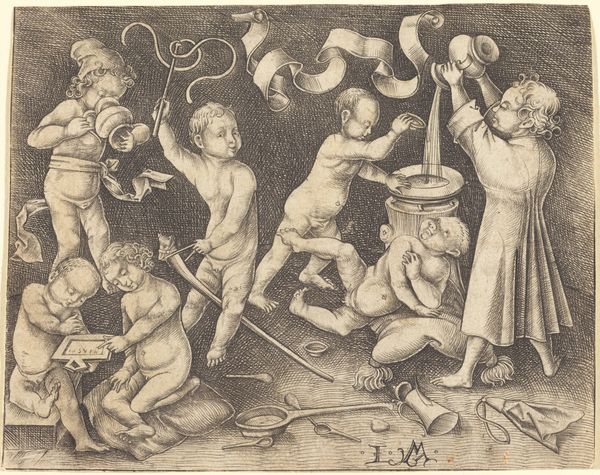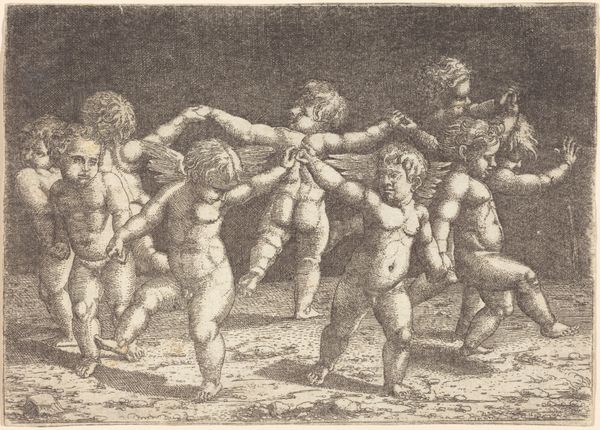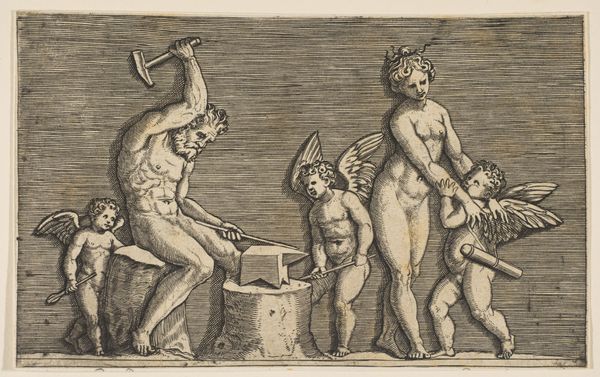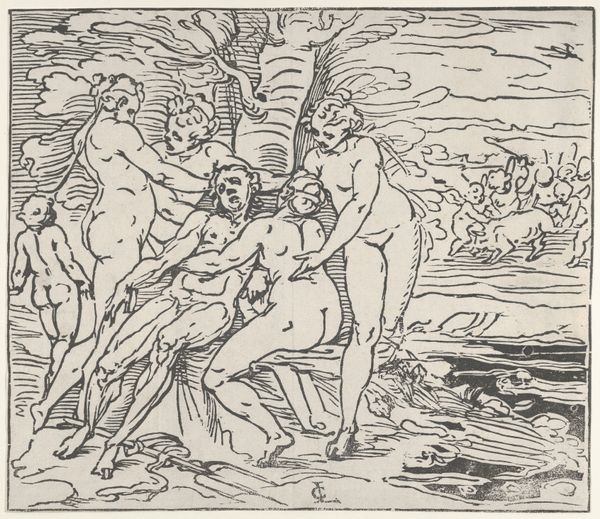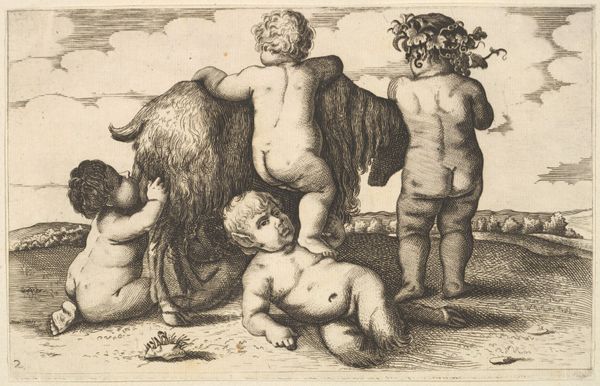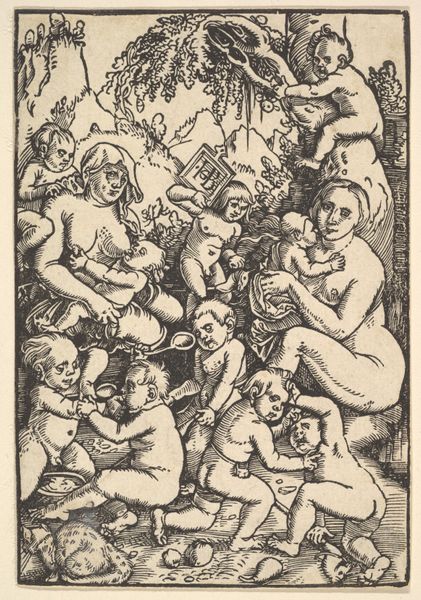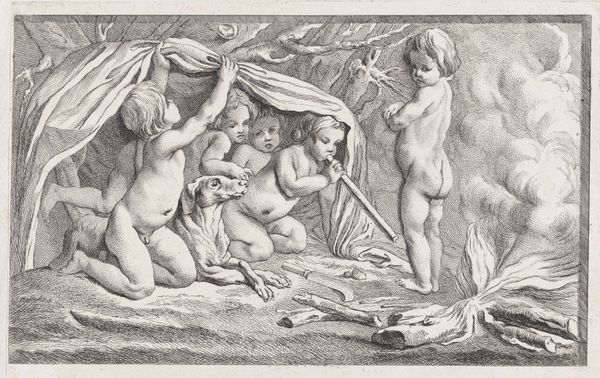
print, engraving
#
allegory
# print
#
figuration
#
genre-painting
#
italian-renaissance
#
engraving
Dimensions: sheet: 7.8 x 10.4 cm (3 1/16 x 4 1/8 in.)
Copyright: National Gallery of Art: CC0 1.0
Editor: So, this is "Five Cupids Playing" by Master F.B., an engraving dating back to around 1475-1500. There's such an interesting tension here – it’s playful, obviously, with these cupids and the little sheep, but there's a roughness to the engraving style that almost gives it a darker edge. How do you interpret this work? Curator: It's interesting you pick up on that tension. I think understanding this piece requires situating it within the social hierarchies of the late 15th century. While on the surface it depicts frolicking cupids, consider who was commissioning and consuming such imagery. Was this ‘playfulness’ accessible to all, or a luxury enjoyed by a select few? Does it offer any social critique? Editor: That’s a perspective I hadn’t considered. I was mainly thinking about the artistry and the subject matter itself, the little figures… Curator: Exactly. And within that subject matter, there’s room to unpack ideas around childhood and innocence, both constructed notions. Look at how these figures are depicted. How might our contemporary understanding of children inform how we view these mischievous cupids? Also, have you considered that there could be implications to using "cupids?" Cupids in antiquity also evoked violence, chaos, disease. Editor: Wow, that’s... unexpected. I suppose I always just saw them as symbols of love and affection, not... violence. But considering how cherubs have been used through ages and across art, could it mean different things to different people based on their cultural understanding? Curator: Precisely! And the fact that they are "playing" perhaps hints at some deeper allegorical meaning relevant to their Renaissance audience, if this imagery reflects the lives and norms of upper class members or if it serves as some alternative, and further what this meant to various intersecting identities. Whose standards are they held up against? Editor: So, it's not just a picture of cupids playing, it's a window into the values, power structures, and philosophical understanding of the Renaissance era, reflecting who had power and setting standards for certain types of behaviour. I'll definitely see this image differently from now on. Curator: Exactly, this challenges us to engage critically, acknowledging the interplay of historical context, artistic representation, and the social meaning that has been constructed across history.
Comments
No comments
Be the first to comment and join the conversation on the ultimate creative platform.
